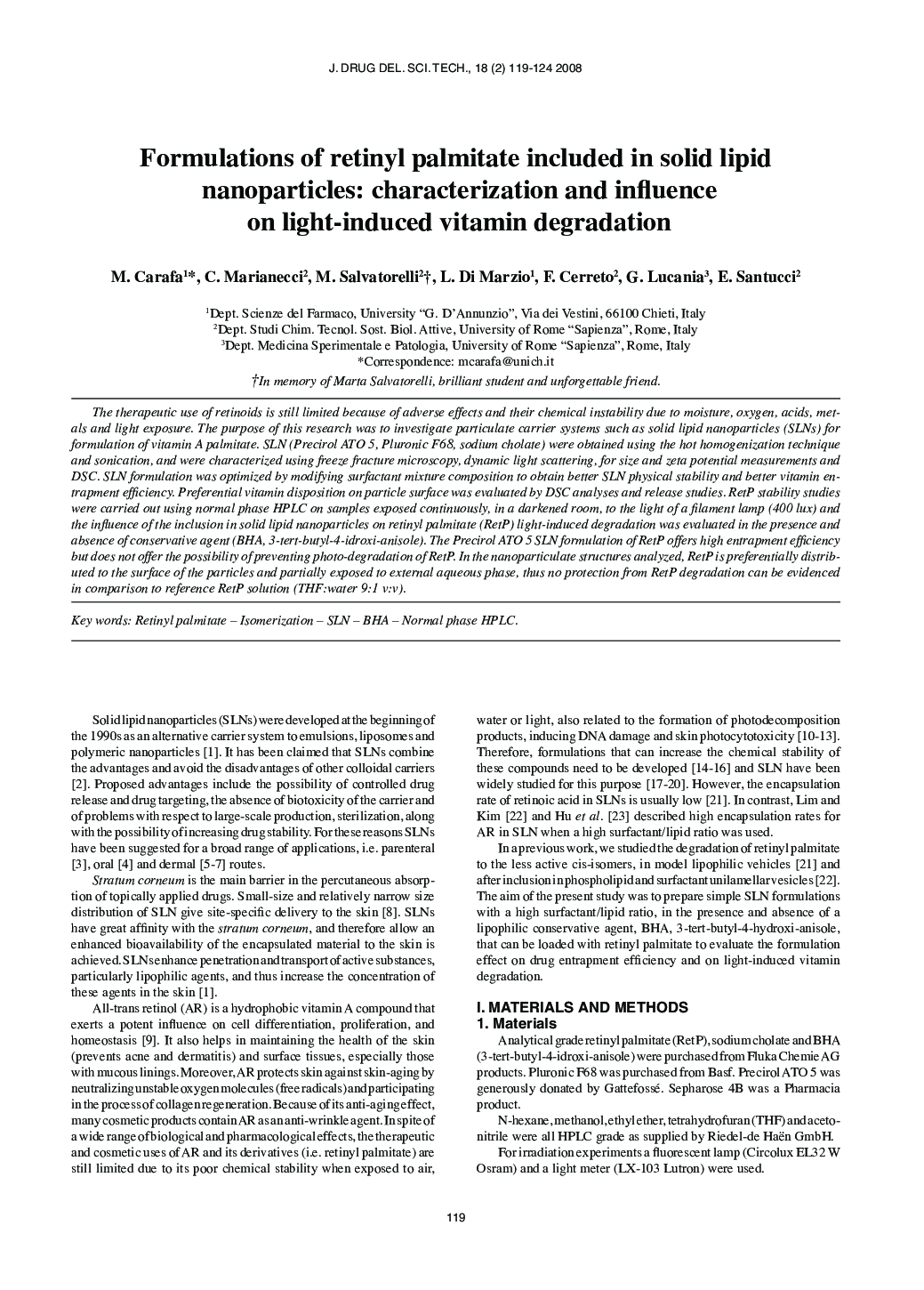| Article ID | Journal | Published Year | Pages | File Type |
|---|---|---|---|---|
| 2483911 | Journal of Drug Delivery Science and Technology | 2008 | 6 Pages |
The therapeutic use of retinoids is still limited because of adverse effects and their chemical instability due to moisture, oxygen, acids, metals and light exposure. The purpose of this research was to investigate particulate carrier systems such as solid lipid nanoparticles (SLNs) for formulation of vitamin A palmitate. SLN (Precirol ATO 5, Pluronic F68, sodium cholate) were obtained using the hot homogenization technique and sonication, and were characterized using freeze fracture microscopy, dynamic light scattering, for size and zeta potential measurements and DSC. SLN formulation was optimized by modifying surfactant mixture composition to obtain better SLN physical stability and better vitamin entrapment efficiency. Preferential vitamin disposition on particle surface was evaluated by DSC analyses and release studies. RetP stability studies were carried out using normal phase HPLC on samples exposed continuously, in a darkened room, to the light of a filament lamp (400 lux) and the influence of the inclusion in solid lipid nanoparticles on retinyl palmitate (RetP) light-induced degradation was evaluated in the presence and absence of conservative agent (BHA, 3-tert-butyl-4-idroxi-anisole). The Precirol ATO 5 SLN formulation of RetP offers high entrapment efficiency but does not offer the possibility of preventing photo-degradation of RetP. In the nanoparticulate structures analyzed, RetP is preferentially distributed to the surface of the particles and partially exposed to external aqueous phase, thus no protection from RetP degradation can be evidenced in comparison to reference RetP solution (THF:water 9:1 v:v).
